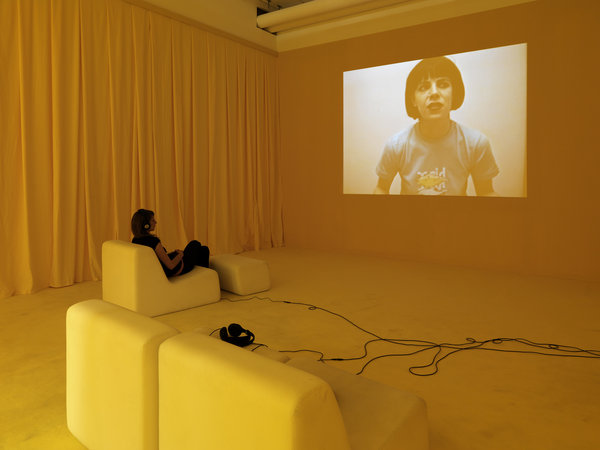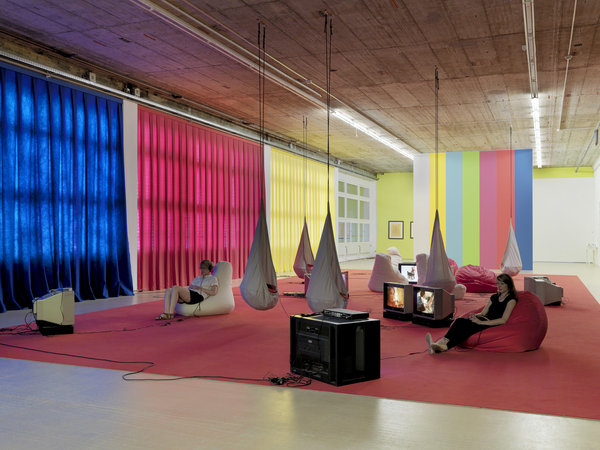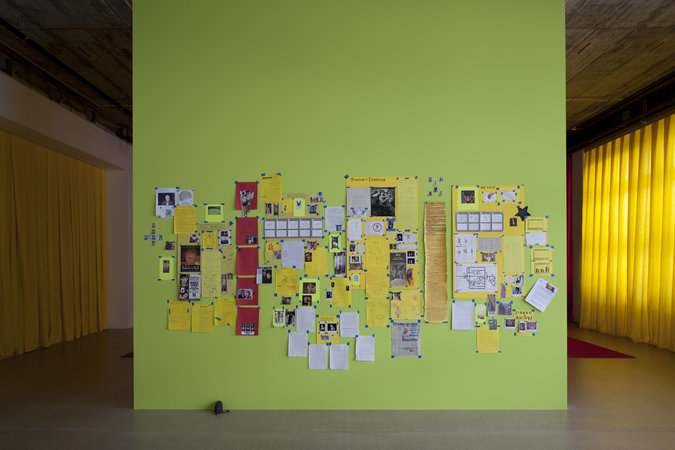Since the early 1990s, the artist Alex Bag (b. 1969, USA) has been one of the most interesting protagonists of video performance art. Today, an entire generation of younger artists regard her work as an important point of reference. She became known for her technically simple videos that address the entertainment industry and its various formats, but also the art system with its lingering romantic notions of the artist’s life, and subject these sources to humorous treatment. Bag articulates her social critique with impressive precision, expressing a profound unease with our contemporary culture; an extraordinarily versatile actress, she usually appears in her own work, playing a great variety of roles. The migros museum für gegenwartskunst is the first institution to present an exhibition offering a comprehensive survey of Bag’s oeuvre.
Two thematic fields that intersect at various points are central to the artist’s interests: on the one hand, Bag examines interactions between high and popular culture; on the other, she analyzes structural characteristics and economic laws governing the art world. Several works explore how authorities or authoritarian structures shape artistic careers: Untitled Fall ’95 (1995) examines art school, The Van (2001) is about the market, and Untitled (Project for the Whitney Museum) (2009) or The Artist’s Life (1996) finally looks at how neoliberalism has institutionalized the pressure to innovate, perform, produce, and succeed. The formal framework for Bag’s videos derives from a variety of formats of television culture—from documentaries, dating and talk shows across reality television to commercial breaks: everything is product, everything is market, everything lends itself to appropriation by the artist. Bag turns to the flood of images that fill the televised world and dissects them using various strategies of defamiliarization.
Wearing costumes, masks, and make-up, the artist plays most roles herself, aiming not at a naturalistic performance based on the attempt to feel the part (which is generally considered “good” and “professional” acting, in the tradition of Constantin Stanislavski’s theory of the theater), but instead seeking out a moment of difference or surfeit (the roots of “overacting” lie in the comedian’s performance) and unfinishedness. This Beckettian aspect of defamiliarization also serves to direct our attention to the spoken text, which is a central element in Bag’s work. She writes the scripts for her own videos; her language mimics that of the various show formats she works with and occasionally feels like pure quotation. Her writing technique is comparable to the work of postmodern authors who use sampling in a critical engagement with the erosion of meaning brought on by the growing prevalence of repetition and linguistic templates in our society. The performance serves primarily to lend scenic articulation to the text. Bag eschews complex stages and settings as well as elaborate camerawork that would enable her to create exciting sequences in the editing studio. Bag’s works deploy a video aesthetic defined by immediacy that is clearly distinct from the “artificiality” of Hollywood’s cinematic aesthetic. Cheap to produce, the video image has stood, and still stands, for an intimate picture; the rise of video technology has been fueled primarily by private uses.
Curated by Raphael Gygax






